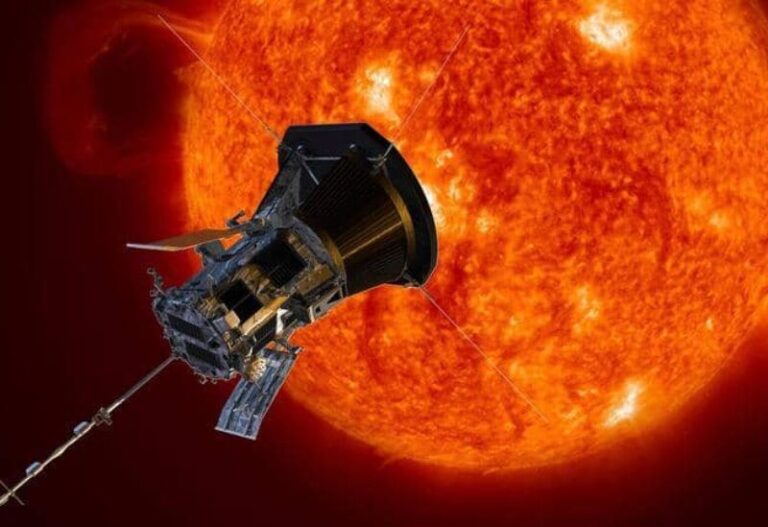Parker probe “touches” the sun for the first time in history!
3 years after its launch, NASA’s Parker Solar Probe managed to fly through the corona (the sun’s upper atmosphere) for several hours on April 28, 2021 (1).
The next day it reached its closest point, 6.5 million miles from the sun, and sampled particles and magnetic fields (2).
The results were announced on December 14, 2021 at the press conference of the American Geophysical Union in New Orleans (3).
Getting close to the Sun was a goal of the 2018 mission. The Parker probe was named after astrophysicist Eugene Parker, who wanted to answer questions about the solar wind (a stream of charged particles emitted from the sun’s corona) (1,3).
This step is a giant leap for solar energy sciences. Because it helps to discover important information about our nearest star and its impact on Earth, not only that; Everything we know about the sun may help us learn more about other stars in the universe (1).
What is the benefit of flying through the corona?
The solar corona has a temperature of about one million degrees Kelvin, and the surface temperature of the Sun is about 5780 degrees Kelvin (3).
Flying through the corona will allow us to understand why the corona is so much hotter than its surface, and how the solar wind is accelerated to 100,000 miles per hour (2).
When Parker enters the corona, but this step is very important for studying the processes responsible for heating the solar corona, and for understanding, interpreting and predicting space weather; This caused the disruption of communications and satellites around the Earth.
The probe is scheduled to orbit 3.9 million miles from the surface of the Sun by 2024 (3).
Sources:
1. NASA Enters the Solar Atmosphere for the First Time, Bringing New Discoveries [Internet]. nasa.gov. 2021 [cited 17 December 2021]. Available from: here
2. NASA’s Parker Solar Probe Touches The Sun For The First Time [Internet]. nasa.gov. 2021 [cited 17 December 2021]. Available from: Here
3. Sanders R. Solar probe touches the sun for the first time in history [Internet]. University of California. 2021 [cited 17 December 2021]. Available from: Here
4. The Sun’s Corona (Upper Atmosphere) [Internet]. UCAR. 2021 [cited 17 December 2021]. Available from: here




